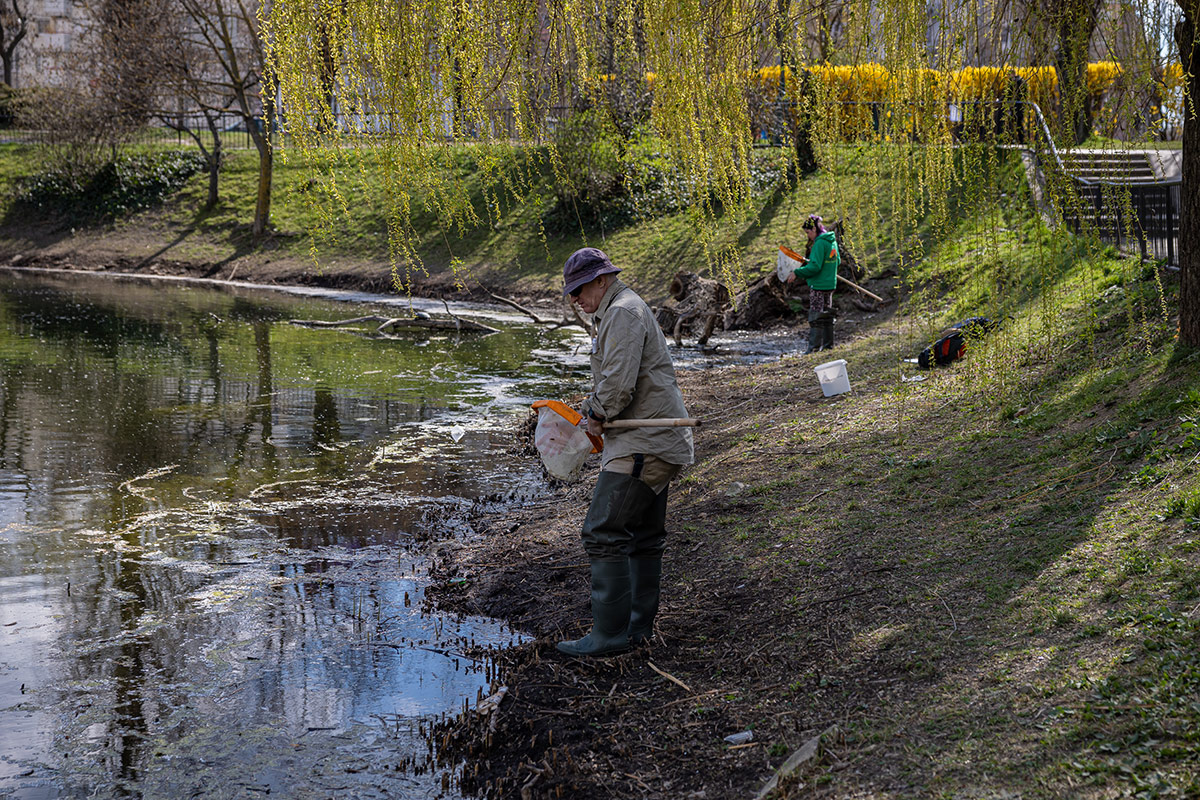
A new review led by researchers at the HUN-REN Centre for Ecological Research provides the most comprehensive overview to date of urban ponds and their ecological functions. In this work, the authors reveal that even the smallest and most overlooked types – garden ponds – can play surprisingly important roles in maintaining urban biodiversity and ecosystem services, at the same time, contributing to potential disservices.
In the article published in Wiley Interdisciplinary Reviews: Water, one of the highest-ranked journals in its field, the researchers synthesise findings from more than 200 scientific studies. For the first time, they clearly distinguish between the ecosystem role of public urban ponds (such as park or stormwater ponds) and ponds hidden on private properties, garden ponds.
Although garden ponds are often only a few square meters in size, collectively they can form dense aquatic habitat networks within cities – and in some areas, they may represent the only available freshwater habitats for many species. “Most people think of garden ponds – and even larger park ponds – as purely ornamental,” says Dr. Zsófia Horváth, lead author of the study. “But if you add up all those tiny ponds scattered across a city, they form a vast hidden network that provides shelter and food for frogs, insects, and even bats. They are small, but together they matter enormously.”
The review also highlights that urban ponds are double-edged ecosystems: while they provide important ecosystem services such as supporting pollinators, microclimate regulation, and recreation, they can also contribute to ecosystem disservices when mismanaged. These include facilitating the spread of invasive species, increasing mosquito populations, and causing eutrophication-related problems, such as unpleasant odours and elevated greenhouse gas emissions.

Importantly, the authors emphasize that the ecological functioning of garden ponds remains far less understood than that of larger ponds usually situated in publicly accessible areas – both in terms of their services and their potential disservices. Although they likely exist in vast numbers globally, we still know very little about their regional occurrence and how similar or different their roles are from other urban ponds in supporting biodiversity or posing ecological risks.
“Urban ponds are not without problems,” Dr. Horváth adds. “If poorly managed, they can become ecological traps, but with proper care, they can also serve as key refuges for biodiversity and act as multi-functional ecosystems providing important ecosystem services.”
Despite the existence of millions of garden ponds worldwide, their ecological roles and risks remain poorly understood, with most studies to date coming from the United Kingdom. The authors call for citizen science initiatives and urban planning strategies that formally integrate privately owned ponds into the blue-green infrastructure of cities and promote responsible management by educational activities.
“Urban sustainability begins in our backyards,” Dr. Horváth concludes. “Recognizing the ecological importance of garden ponds could fundamentally change how we think about urban nature conservation.”
The study concludes that even the smallest water patches can hold disproportionately high ecological value – a finding that could reshape how cities approach biodiversity and sustainability in the era of climate change.
Source:


